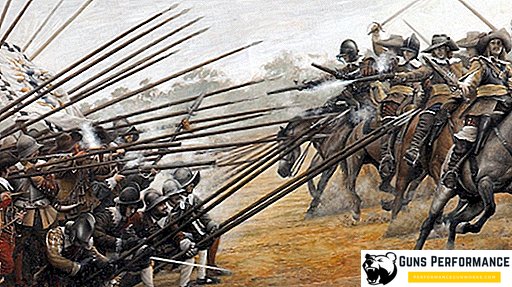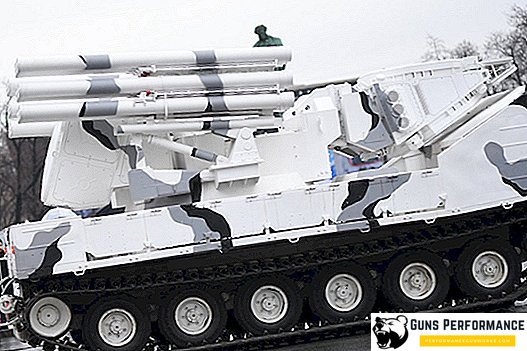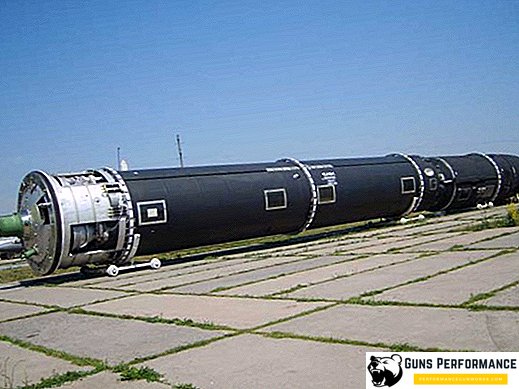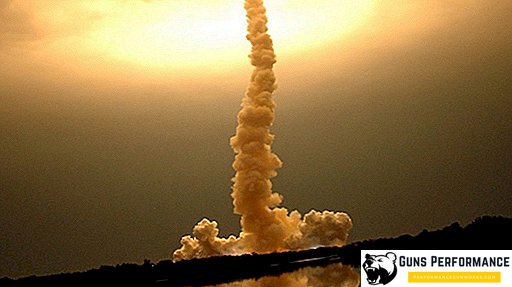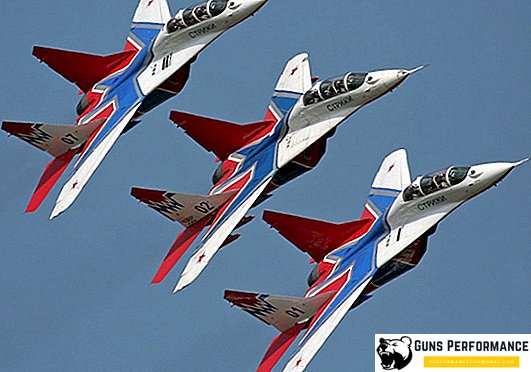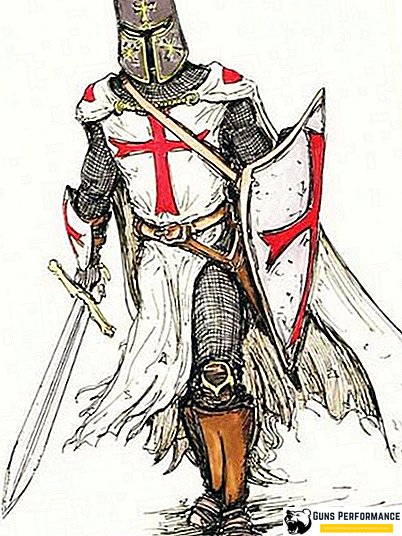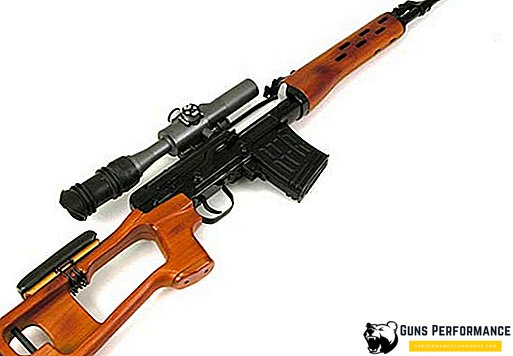What is a monocular? Monoculars are conventional magnifying optics, which are often supplied with additional electronic features. Monoculars are most similar to optical sights than binoculars. However, in contrast to the sights, they can be mounted on a person’s head or just be in their hands.

By their classification, monoculars are similar to binoculars. At the heart of such devices are found all the same optical systems, the high quality of which is undesirable to save. For all that, monoculars are often used as night vision devices.
It should be borne in mind that a variety of monoculars can be used for a variety of purposes. For example, the use of some night devices may be completely useless in the daytime, while conventional devices are poorly suited for night time. However, some (perhaps even large) of such devices can function both in light and in its absence.
Thus, monoculars can be passive - able to function exclusively in conditions of a natural (albeit minimal) level of illumination, as well as active - using IR illumination. Moreover, the active equipment can function in the absence of external lighting.
Advantages of modern monoculars

Before choosing night vision monoculars, for example, for hunting, one should take into account all their specificity. Despite the constructive simplicity, the devices have many advantages, including:
- Compact size;
- Affordable price;
- Opportunity to use as sights;
- Possibility of connection through binoculars;
- Low weight;
- Small dimensions;
- Low power consumption;
- Wear resistance;
- Long service life;
- Fixing on masks or helmets.
In contrast to night sights, monoculars, as a rule, are always at hand. Movement in the conditions of the night forest, peering into the gun sights, for any hunters will be extremely uncomfortable. However, when a person holds in his hands a lightweight and compact device, with the help of which he will always be on his guard, movement through the forest becomes much safer.
Main performance characteristics of monoculars

The first step is to familiarize yourself with:
- The multiplicity is a characteristic indicating the level of approximation of objects. In descriptions of models, the multiplicity can be indicated as the first digit before the symbol "x". In order to better understand this, you can use the example of a monocular, which has a tenfold magnification (10x). So, when objects can be at a distance of 1000 meters, the observer will be able to discern it as if they are located a hundred meters away. For devices with variable focus, numbers will be indicated using a hyphen;
- Dia. In lenses (in millimeters) this will be the image of the second digit, which follows the symbol "x". Thus, the larger the lens, the wider the field of view;
- Enlightened optics. Usually glass lenses pass some of the light through themselves, while the other part of it is reflected. In line with this, not the whole world manages to reach the eye, and as a result, objects are not displayed as well. To get rid of this imperfection, several or even one thinnest film is applied to the lenses, most often they have their own wavelength. Lenses with films deposited on them are called enlightened;
- Filling with argon or nitrogen. Such types of gases do not have the ability to accumulate water vapor, due to this, when a sudden change in temperature occurs, the lenses do not mist over from the inside;
- Diopter adjustment. We have to admit that not all people have good eyesight, because of this, many of them are forced to use glasses, which sometimes can interfere with the use of a monocular. In order to avoid this, the possibility of diopter adjustment is built into the eyepiece itself, as a rule, this occurs in the range of ± 5D.
It is necessary to take into account the fact that these were only the most important of the many important points in the TTX of monoculars.
How is the pricing of monoculars
The cost of monoculars depends on a number of important factors, but mainly the pricing is affected by:
- Brand manufacturer;
- Magnification;
- The presence of an additional electronic functional monocular.

In addition, the presence of additional functions may become a fundamental factor in the process of forming the final cost of a monocular, which can vary in a wide variety of values in the range of 15-7000 US dollars.
Classification models of high-quality monoculars
Based on the capabilities and quality of the electron-optical converter, monoculars are divided into four classes. So, it is almost impossible to approach the third and fourth classes (the most advanced devices), they cannot be bought at the nearest electronics supermarket. Basically, devices of this level are used in special units and power structures.
The domestic market of monoculars is filled with models from the following manufacturers of optical technology:
- Carl Zeiss;
- Sturman (the optics of this brand is a simple amateur technique for tourism or nature lovers);
- KOMZ (from Kazan Optical-Mechanical Plant);
- The Oil Refinery (from the Novosibirsk Instrument-Making Plant) is a Russian, but rather high-quality equipment manufacturing plant, a manufacturer of optical equipment.
Choosing the best monoculars
As already mentioned, the characteristics by which you can choose the necessary device for yourself can actually be very much, and they will be considered to some extent in the process of reviewing the most popular models. Although in reality it is not so difficult to choose monoculars, it will be much more difficult to decide for what purpose it will be needed.

Veber Sport 12 × 25 BR ($ 20)
This model can be presented as a vivid example of a conventional monocular. With its low price, light weight and high-quality optics, this device has gained great popularity. Many people use them in everyday life, watching sports, performances in the theater.
There is nothing special in this monocular, but its main advantage is that experts note the presence of coated optics and waterproof housing. The mass of the device does not exceed 100 grams, thanks to which it became known as the "pocket version".
KOMZ MP 15 × 50 ($ 70)
Such monoculars belong to a higher class than previous ones, and are much more suitable for outdoor activities. Some hunters use these monoculars on the hunt and there are good reviews about them.
A distinctive feature is that the axes of the external lenses and eyepieces have a certain disunity, moreover, all this was done for a specific purpose. When people use two eyes, they immediately determine the middle of the visible image. However, with the closing of one eye, the representation of the middle shifts, and people are lost in space. Monoculars with spaced axes make it possible to orient the lenses as if between the eyes (as in the mythical Cyclops). As a result, the image viewed even with one eye will be correctly centered.

Among other things, this monocular has another advantage. This is one of the few models where the material for the body is metal, not the usual plastic, and the price is not that high. Monoculars are equipped with enlightened optics and have a real angular field of view of 4.4 °. This, though not a budget, but rather a high-quality acquisition.
Yukon NVMT Spartan 2 × 24 (PNV, $ 190)
Such monoculars are no longer monoculars, but more night vision devices, made in the form factor of monoculars. The purpose of these devices, and so it is clear from their names, but on the quality performance can be stopped. In fact, Yukon in the world of optics can be correlated to BMW in the auto world. It also has its own "supercars", but the Yukon - remains the Yukon. They all performed at the highest level: rubberized body with the presence of soft-cover, well-designed mountings for tripods or helmets.

The implementation of night vision is based on infrared illumination and operates at a distance of up to 150 m. However, the most remarkable thing is that special photo-adapters can be acquired for these monoculars, after which the devices also become camera lenses. The probability of using monoculars with cameras takes them to a qualitatively new level, the same perspective of night photography and video can only be underestimated. Today, there are amateur camcorders that have the function of night shooting, but approaching the distance in them is completely different, while having the opportunity even in the daytime to take pictures at a distance of 200 meters can be extremely useful.
Minox MD 6 × 16 A ($ 250)
These monoculars are considered the best travel options in their class. However, when people talk about tourism, they do not always imagine what kind of a variety it is and how, for example, tourist may differ from hunting. However, there is a difference. Hunting devices are designed for an unpretentious attitude towards them, they can be dropped, drowned, dirty, etc. Hunters are usually strong men, and an excess of a pound will hardly play a special role. Whereas for tourists the mass of baggage can be very significant, because they value the versatility of things more.

In their optics, these devices do not stand out in any way, but they have quite decent parameters, characteristic of such devices, and their own advantages. In metal cases with a very compact size and unusual for optics configuration of the bar type there are altimeters, thermometers, clocks and stopwatches. They are suitable for lovers of the mountains, coaches for a variety of winter sports or for sports shooting.
Dipol D126H Pro ($ 2150)
An interesting variation, which may remind that all modern monoculars were produced mainly for the military. In the process of manufacturing this particular device, the task was set to create not so much a lightweight version of binoculars as instruments that could be attached to sights, aiming modules, lighting and photo devices. In the military, whole complexes, the so-called "day-night", are considered especially popular. These are monoculars that can be almost instantly attached to other devices or even to folding ones. It is clear that the requirements for military equipment or weapons can be very high.
The described monoculars actually belong to such an uncompromising system. They are also night vision devices with a good distance from the infrared illumination and with the ability to connect another infrared module to enhance the effect. The case has all the moisture, dust and dirt protection properties. The optics itself was performed at a very high level, such as a “long-range gun” with a tracking distance of 500 m. Not many will be able to appreciate this device, only a reflecting telescope can be better than it.
Brief conclusions on the choice of monocular
After familiarizing yourself with most of the monoculars, you might get the impression that you don’t need binoculars at all. Yes, with proper handling of one or two monoculars, you can observe almost like through binoculars.

When choosing monoculars, industrial production provides the solution to almost all the tasks before it, but the main thing when choosing, as always, is the quality of optics. High-quality optics are recognized by specific rainbow ebb, depth sensations and multi-layer lenses. You should know that by weight quality lenses are heavy. Cases with such lenses can be from different materials, but they should not have backlashes, cracks, traces of glue, as well as scratches.


